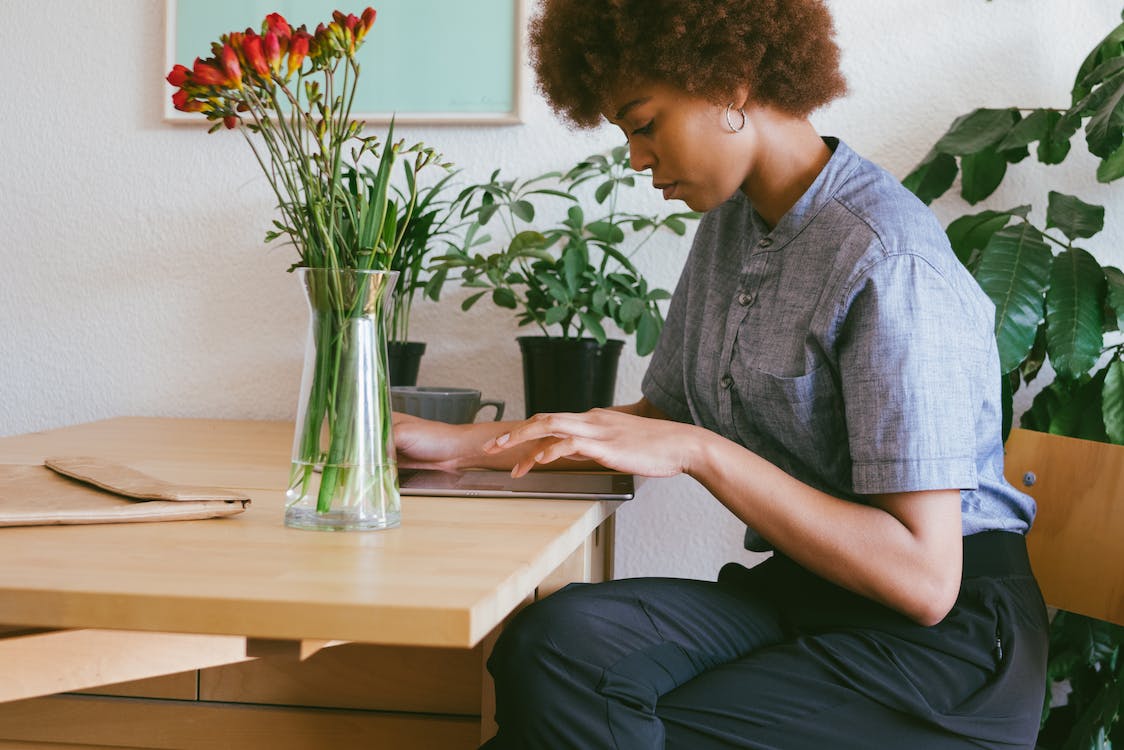In the competitive world of eCommerce, striking the perfect balance between an aesthetically pleasing website design and an exceptional user experience (UX) is crucial for success. In this comprehensive blog post, we'll explore how graphic design and UX intersect to create a high-converting eCommerce website, covering topics such as creating visually appealing websites that also offer a great user experience, designing with eCommerce metrics and KPIs in mind, and balancing branding with UX recommendations.
Additionally, we'll provide insights on choosing the right graphic design and branding services for your eCommerce website and discuss the benefits of hiring a BigCommerce or Shopify website design agency.
Creating a Visually Appealing eCommerce Website
To create a visually appealing eCommerce website that also provides an exceptional user experience, it's essential to consider several key factors, including photography, branding consistency, site design and user-centric thinking.
Use Compelling Photography
High-quality images are essential for capturing your audience's attention and showcasing your products effectively. Investing in professional product photography or using high-resolution stock images that align with your brand identity can make a significant difference in your site's overall appearance and conversion rates.
When selecting images for your website, consider the following:
- Consistency: Ensure that all product images follow a consistent style, format, and background to create a cohesive visual experience.
- Image size and resolution: Use high-resolution images and optimize them for fast loading times without compromising quality.
- Contextual photos: Include lifestyle images and in-context product photos to help customers visualize your products in real-world scenarios.
Ensure Cohesive Branding Across the Site
Consistent branding helps build trust and brand recognition, which is vital for converting visitors into customers.
To achieve cohesive branding throughout your website, consider these aspects:
- Logo: Your logo should be prominently displayed on your website and consistently used across all pages.
- Color scheme: Choose a color palette that reflects your brand identity and use it consistently throughout your site, including backgrounds, text, buttons, and other design elements.
- Typography: Select a legible, visually appealing font that complements your brand's style and use it consistently across all headers, subheaders, and body text.
- Brand voice: Your website's copy should reflect your brand's personality and values, using a consistent tone and style throughout all pages and content.
To better understand what cohesive branding looks like in practice, check out the all-new Dippin’ Dots website which our team designed and developed. Notice the inclusion of unified color schemes, typography, and voice throughout.
Make Your Website a Visual Extension of Your Physical Location
If you have a brick-and-mortar store, creating a seamless shopping experience by incorporating similar design elements, colors, and visuals on your website can foster familiarity and trust among your customers.
To achieve this:
- Use photos and videos of your physical store to help website visitors connect with your brand.
- Incorporate store-specific design elements, such as unique fixtures, displays, and signage, into your website design.
- Feature in-store promotions, events, or exclusive products on your website to create a sense of continuity between your online and offline presence.
Think Like a Website Visitor
Approach your website design from the perspective of your target audience, considering what they would find visually appealing and prioritizing ease of navigation and product discovery.

To achieve this:
- User research: Conduct surveys, interviews, or usability tests to gather insights into your target audience's preferences and pain points.
- User personas: Create user personas to represent different segments of your target audience, helping you make design decisions that cater to their specific needs and expectations.
- Customer journey mapping: Outline the various stages and touchpoints of a customer's journey on your website, identifying areas where design improvements can enhance the user experience.
Straightforward User Experience
A clear, intuitive site structure with easy-to-find product categories, filters, and search functionality is essential for a smooth and seamless user experience from browsing to checkout.
To optimize your website's UX, consider these factors:
- Navigation: Create a logical and easily navigable menu structure that allows users to find products or information quickly.
- Product categories and filters: Organize your products into well-defined categories and offer filters to help users narrow down their search based on specific attributes, such as size, color, price, or brand.
- Search functionality: Implement a robust search feature with autocomplete suggestions and the ability to handle misspellings or variations in search terms.
- Clear calls-to-action (CTAs): Use prominent, action-oriented CTAs that guide users through the purchasing process, making it easy for them to add items to their cart, proceed to checkout, or continue shopping.
- Optimized checkout process: Streamline the checkout process by minimizing the number of steps, offering guest checkout options, and providing multiple payment methods.
Include Animation, Even Simple Ones
Subtle animations can add a touch of sophistication and create a more engaging experience. However, it's crucial to use them sparingly and ensure they don't hinder site performance or distract from essential elements.
When incorporating animations:
- Choose animations that enhance the user experience, such as transitions between pages or revealing additional information when hovering over an element.
- Opt for lightweight, performance-friendly animations that won't slow down your website's loading times.
- Ensure that animations are accessible and compatible with screen readers and other assistive technologies.
- Test animations across various devices and browsers to ensure a consistent experience for all users.
Balancing Branding with UX Recommendations
When balancing branding with UX recommendations, it's essential to prioritize accessibility, legibility, and responsiveness while still maintaining a strong brand identity.
Adhere to Accessibility Guidelines
Design your website to be accessible for users with disabilities by following Web Content Accessibility Guidelines (WCAG). This not only improves the user experience for all visitors but also helps with SEO.
- Use semantic HTML to provide a meaningful structure and clear hierarchy for your content.
- Ensure that all interactive elements, such as buttons and links, are easily identifiable and usable with a keyboard.
- Provide captions or transcripts for audio and video content to make it accessible for users with hearing impairments.
- Offer options for users to adjust text size, contrast, or other display settings to accommodate their needs.
Check Color Contrast Between Elements
Ensure that there is sufficient color contrast between text, buttons, and backgrounds to improve readability and usability. Use online tools like WebAIM's Color Contrast Checker to test and adjust your color combinations.
Keep in mind the following recommendations:
- Text and background: Aim for a contrast ratio of at least 4.5:1 for normal-sized text and 3:1 for large text.
- Interactive elements: Ensure that buttons, links, and other interactive elements have a contrast ratio of at least 3:1 against their surrounding elements.
- Graphics and icons: Use high-contrast colors for essential graphics and icons to ensure they are easily distinguishable.
Make Sure Your Font Sizes Are Legible
Choose clear, easy-to-read fonts and use appropriate font sizes for headings, subheadings, and body text.
To enhance legibility:
- Opt for sans-serif fonts, which tend to be more legible on screens than serif fonts.
- Use a base font size of at least 16 pixels for body text, adjusting it based on your specific font choice and audience needs.
- Ensure that headings and subheadings are clearly differentiated from body text, using a combination of size, weight, and style.
- Test your font choices across various devices and screen resolutions to ensure a consistent and legible experience for all users.
Don't Ignore Mobile and Tablet Users
With a growing number of shoppers using mobile devices and tablets to make purchases, it's crucial to design your website with responsive layouts that work seamlessly across different screen sizes. 
To optimize your site for mobile and tablet users:
- Use a mobile-first design approach, ensuring that your website is fully functional and visually appealing on smaller screens.
- Implement touch-friendly navigation, buttons, and forms that are easy to use on touchscreens.
- Optimize images and other media for faster loading times on mobile devices, using techniques such as lazy loading or responsive image formats like WebP.
- Test your website on various devices, screen sizes, and operating systems to identify and fix any potential issues.
Avoid Dark Web Patterns
Dark web patterns are deceptive design tactics that trick users into performing unintended actions, such as signing up for newsletters or making unwanted purchases.
To maintain a positive user experience and build trust with your audience:
- Be transparent about pricing, shipping costs, and other fees, displaying them clearly before users proceed to checkout.
- Avoid using pre-selected checkboxes or opt-in forms that automatically enroll users in subscriptions, marketing communications, or additional purchases.
- Use clear, honest language when describing products, offers, and promotions, avoiding exaggerated claims or hidden terms and conditions.
Follow SEO Best Practices
Designing with SEO in mind can improve your website's visibility on search engines, driving more organic traffic and potential customers.
Some key SEO best practices to consider during the design process include:
- Incorporating relevant keywords in your headings, subheadings, and body text.
- Using header tags (H1, H2, H3, etc.) to create a clear content hierarchy for search engines to crawl and understand.
- Creating a logical site structure with well-organized categories, subcategories, and internal linking.
- Optimizing your website's performance and load times, as slow websites can negatively impact your search rankings.
Include Alt Text in Your Images
Including alt text in your images provides context for screen readers and search engines, improving both accessibility and SEO.
When writing alt text:
- Be descriptive and concise, accurately describing the content and purpose of the image.
- Include relevant keywords when appropriate but avoid keyword stuffing.
- Ensure that decorative images or images used for layout purposes have empty alt attributes (alt="") to avoid confusion for screen reader users.
Benefits of Hiring a BigCommerce or Shopify Website Designer with Strong Graphic Design Experience
Partnering with a BigCommerce or Shopify website designer who has a strong background in graphic design can significantly enhance your eCommerce website's design, functionality, and user experience. In this section, we will delve into the numerous benefits of hiring such a designer for your online store.
Experience with Similar Stores
Designers specializing in BigCommerce or Shopify platforms have experience working with other stores similar to yours. This experience grants them a deep understanding of your chosen platform's capabilities and limitations. They can create an optimized design tailored to your business needs, leveraging platform-specific features and best practices to enhance your website's performance and usability.
For example, these designers are well-versed in:
- Theme customization: They know how to modify existing themes or create custom themes that align with your brand identity and eCommerce goals.
- Integrations: They are familiar with popular third-party apps and integrations that can extend your store's functionality, such as email marketing tools, inventory management systems, and customer review platforms.
- Troubleshooting: With their in-depth knowledge of the platform, these designers can quickly identify and resolve technical issues that may arise during the design process or after your website goes live.
Access to a Skilled Team
By hiring a professional design agency, you gain access to a team of skilled designers, strategists, and developers who collaborate to create the best possible eCommerce experience for your customers. This integrated approach ensures that all aspects of your website, from visuals and branding to user experience and technical functionality, are carefully considered and aligned with your business goals.
With a skilled team at your disposal, you can expect:
- Comprehensive project management: The agency will coordinate the entire design process, from initial planning and strategy to final implementation and testing, ensuring that your project stays on track and meets its objectives.
- Expertise across disciplines: The team's diverse skill set means they can tackle various aspects of your website design, including graphic design, UX/UI design, web development, and content creation, providing you with a cohesive and polished final product.
- Ongoing support and maintenance: Many agencies offer ongoing support and maintenance services after your website is live, helping you keep your site up-to-date, secure, and optimized for performance.
Collaboration with Strategists and Developers
A designer with strong graphic design experience will collaborate closely with strategists and developers, ensuring that your website's design and functionality are well-integrated and support your overall business objectives.
This collaboration can lead to several advantages:
- Alignment of design and strategy: The designer will work with strategists to develop a visual identity that reflects your brand values, target audience, and eCommerce goals, ensuring that the design supports your marketing and sales efforts.
- Seamless integration of functionality: Designers and developers can work together to implement features such as product filters, shopping cart functionality, and payment gateways, ensuring that these elements are visually appealing and user-friendly.
- Improved performance and SEO: Close collaboration between designers and developers can result in a faster, more optimized website that adheres to SEO best practices, improving your site's visibility and search engine rankings.
Tailored Solutions for Your Business
Hiring a BigCommerce or Shopify website designer with strong graphic design experience means that you'll receive a tailored solution specifically designed to meet your business's unique needs and objectives. These designers can create custom designs and functionality that set your website apart from competitors and cater to your target audience's preferences and expectations.
Conclusion
In conclusion, investing in a BigCommerce or Shopify website designer with a strong background in graphic design can significantly improve your eCommerce website's design, functionality, and user experience. By leveraging their experience with similar stores, accessing a skilled team of experts, collaborating with strategists and developers, and receiving tailored solutions for your business, you can create an online store that not only looks visually appealing but also provides an exceptional user experience that drives conversions and sales.
Discover how strategic design and development choices can significantly impact your conversion rates. Check out "Design And Development Essentials To Drive Conversions" for a deep dive into techniques that can transform your site's performance.
In the ever-evolving world of eCommerce, having a website that stands out from the competition and caters to your customers' needs is paramount. By choosing the right design partner, you can ensure that your online store is positioned for success and poised to grow alongside your business. So, take the first step towards creating the perfect eCommerce experience for your customers by hiring a skilled BigCommerce or Shopify website designer with a strong graphic design background today.

E-BOOK
20 Best Shopify Apps For Your eCommerce Store
Explore tags:
About the author
Subscribe to the Groove Newsletter
Get the latest updates and insights straight to your inbox




